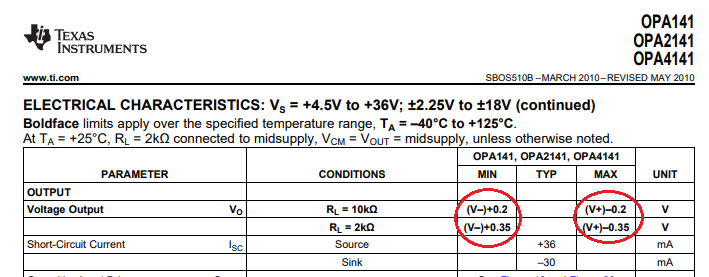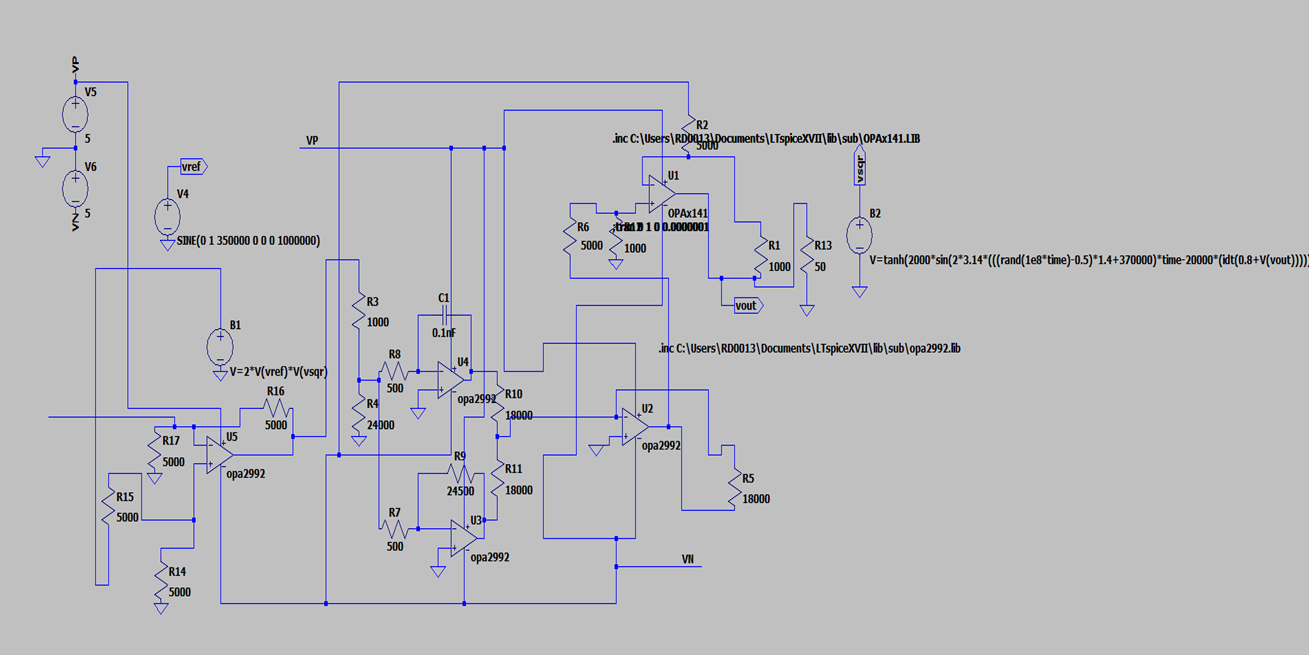Other Parts Discussed in Thread: TINA-TI, OPA4992
Dear Sir:
I am using opa 4141 opamp in a PLL to lock a vco system to 350000Hz reference oscillator signal. The error should not be > 0.0003 Hz roughly..
When the opamp that derives the vco with error signal operates near zero output current from opamp, the loop can not lock, but when the operating point of the opamp implies significant current out put the loop locks..The load resistance of the opamp is 50 ohms...
I suspect that the push pull output stage of the opamp in introducing some nonlinearity when the output current is near zero..Is it correct?
Also, do you have any other quad opamp package that has an A type amplifier output stage that can perform well with +/- 5 volts supply..?(instead of AB type amplifier output stage
Thanks







